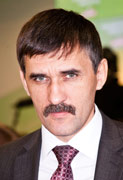  
| |||
|
| Current issue About edition Editorial board To authors Subscription Our authors Files |
|
September 2025, № 3 (247), pages 51-57doi: 10.25198/1814-6457-247-51Dai Yunfang 1. Azimov E. G. and Shchukin A. N. (2009) New dictionary of methodological terms and concepts (theory and practice of language teaching). M.: IKAR Publishing House, 448 p. 2. Kapitonova T. I. and Moskovkin L. V. (2006) Methods of teaching Russian as a foreign language at the stage of pre-university training. St. Petersburg: Zlatoust, 272 p. 3. Krylova O. A. and Khavronina S. A. (1986) Word order in Russian. 3rd ed. M.: Russian language, 237 p. 4. Krylova O. A. and Khavronina S. A. (2015) Word order in Russian: linguodidactic aspect. M.: Russian language. Courses, 168 p. 5. Kovtunova I. I. (1976) Modern Russian language: word order and actual division of sentences. M.: Education, 239 p. 6. Ignatenko A. V., Agarkova D. S. and Litvinova N. D. (2020) Russian language: Alternative compulsory textbook (1 module). Beijing: Public Education, 104 p. 7. Ignatenko A. V. and Litvinova N. D. (2020) Russian language: Alternative compulsory textbook (module 2). Beijing: Public Education, 99 p. 8. Ignatenko A. V., Agarkova D. S.and Litvinova N. D. (2020) Russian language: Alternative compulsory textbook (module 3). Beijing: Public Education, 105 p. 9. Ignatenko A. V., Agarkova D. S. and Litvinova N. D. (2020) Russian language: Alternative compulsory textbook (4th module). Beijing: People's education, 87 p. 10. Mao Yupeng (2020) Characteristics of errors in the field of word order in the written speech of Chinese students. Bulletin of the Volgograd State Pedagogical University. No. 1, pp. 97-102. 11. Liu Guoxiang (1996) The main types of Russian word order and a comparison of word order in Russian and Chinese. Bulletin of the Institute of Foreign Languages of the PLA, No. 1, pp. 32-37. 刘国祥, “俄语词序的基本类型及俄汉词序比较”, 解放军外国语学院学报, 第一期, 1996 年, 32-37 页. (in Chinese) 12. Lyakhovitsky M. V. (1981) Methods of teaching foreign languages. M.: Higher School (Moscow), 159 p. 13.Fang Qian (2018) Principles of creating a textbook for teaching foreign philology students (level B2) the expression of conditional relations in a scientific text. World of Science, Culture, Education, No. 4(70), pp. 143-146. 14. Xie Xin Yu (2016) Principles of Teaching Foreign Students to Use Interrogative Particles in Speech (using the particle "really" as an example). Scientific Opinion, No. 13, pp. 112-115. 15. Russian Language Curriculum for Secondary School (in Chinese). URL: http://sdfz.jsnu.edu.cn/ab/9e/c15532a306078/page.htm. About this articleAuthor: Day YunfanYear: 2025 doi: 10.25198/1814-6457-247-51 |
|
||||||||||||
| Current issue About edition Editorial board To authors Subscription Our authors Files |
|
© Электронное периодическое издание: ВЕСТНИК ОГУ on-line (VESTNIK OSU on-line), ISSN on-line 1814-6465 Зарегистрировано в Федеральной службе по надзору в сфере связи, информационных технологий и массовых коммуникаций Свидетельство о регистрации СМИ: Эл № ФС77-37678 от 29 сентября 2009 г. Учредитель: Оренбургский государственный университет (ОГУ) Главный редактор: С.А. Мирошников Адрес редакции: 460018, г. Оренбург, проспект Победы, д. 13, к. 2335 Тел./факс: (3532)37-27-78 E-mail: vestnik@mail.osu.ru |
1999–2025 © CIT OSU |















